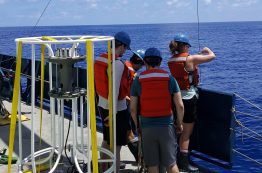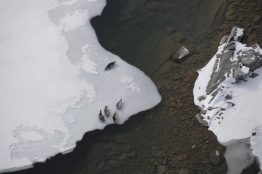Travel fellowships will allow School of Aquatic and Fishery Sciences PhD student Daniel Hernandez and School of Environmental and Forest Sciences undergrad Robert Thadeus Sternberg to embark on solo journeys around the world.
Read more about the Bonderman Travel Fellowship »Atmospheric scientist Chris Bretherton elected to National Academy of Sciences
Chris Bretherton, a University of Washington professor jointly appointed in the departments of Atmospheric Sciences and Applied Mathematics, has been elected to the National Academy of Sciences. He is one of 100 new members elected for their “distinguished and continuing achievements in original research” who were announced April 30 by the academy. Chris studies how clouds form and change over time and how to better represent these processes in global climate and weather-forecasting models.
Read more at UW News »Arsenic-breathing life discovered in the tropical Pacific Ocean
Arsenic is a deadly poison for most living things, but new research shows that microorganisms are breathing arsenic in a large area of the Pacific Ocean. A University of Washington team has discovered that an ancient survival strategy is still being used in low-oxygen parts of the marine environment. “Thinking of arsenic as not just a bad guy, but also as beneficial, has reshaped the way that I view the element,” said first author Jaclyn Saunders, who did the research for her doctoral thesis at the UW School of Oceanography and is now a postdoctoral fellow at the Woods Hole Oceanographic Institution and the Massachusetts Institute of Technology.
Read more at UW Today »Chemical records in teeth confirm elusive Alaska lake seals are one of a kind
Hundreds of harbor seals live in Iliamna Lake, the largest body of freshwater in Alaska and one of the most productive systems for sockeye salmon in the Bristol Bay region. These lake seals are a robust yet highly unusual and cryptic posse. Although how the seals first colonized the lake remains a mystery, it is thought that sometime in the distant past, a handful of harbor seals likely migrated from the ocean more than 50 miles (80 kilometers) upriver to the lake, where they eventually grew to a consistent group of about 400.
Read more at UW News »




